Do Hawks Eat Rabbits? The age-old question that has sparked debates and captured the curiosity of nature enthusiasts. The answer is a resounding YES!
Hawks, with their sharp talons, hooked beaks, and keen eyesight, are formidable predators that have fascinated humans for centuries.
And those fluffy friends, the rabbits, they’re on the menu! But why does this predator-prey relationship matter?
It’s all about maintaining balance in ecosystems. Let’s unravel the captivating world of hawks and rabbits together!
Table of Contents
- 1 Definition of Hawks
- 2 Definition of Rabbits
- 3 The Importance of Understanding The Relationship Between Hawks And Rabbits
- 4 Do Hawks Eat Rabbits?
- 5 The Diet of Hawks
- 6 Rabbits and their behavior
- 7 The Relationship Between Hawks and Rabbits
- 8 Habitat destruction:
- 9 Climate change:
- 10 Human intervention:
- 11 Conclusion
- 12 FAQs: Do Hawks Eat Rabbits?
- 12.1 What do rabbits eat?
- 12.2 Why is the relationship between hawks and rabbits important?
- 12.3 What are the hunting techniques used by hawks to catch rabbits?
- 12.4 Which hawks eat rabbits?
- 12.5 How do rabbits protect themselves from hawks?
- 12.6 What is the impact of hawks on rabbit populations?
- 12.7 What factors affect the relationship between hawks and rabbits?
- 12.8 How can we preserve the balance between hawks and rabbits?
- 13 References:
- 14 Author
Definition of Hawks
Hawks are birds of prey that belong to the family Accipitridae. There are around 270 species of hawks found worldwide, with varying sizes and characteristics.
Some common types of hawks include Red-tailed Hawk, Cooper’s Hawk, Sharp-shinned Hawk and Northern Harrier.
Hawks have sharp talons that they use to catch and kill their prey while flying at high speeds. They also have excellent vision which allows them to spot their prey from great distances while soaring through the air.
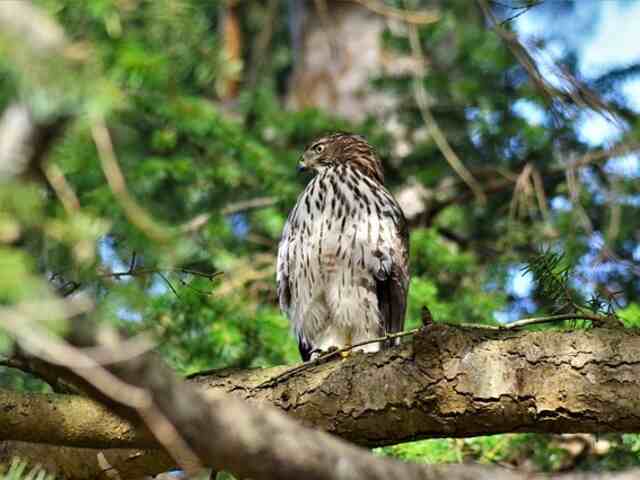
Definition of Rabbits
Rabbits belong to the family Leporidae which consists of 55 species found all over the world except for Antarctica. They are herbivorous animals that primarily feed on plants such as grasses, clovers and leafy weeds.
Rabbits have many adaptations that help them survive in their environments, such as strong hind legs used for jumping away from predators quickly and big ears allowing them to detect sounds from far away.
The Importance of Understanding The Relationship Between Hawks And Rabbits
The relationship between hawks and rabbits is important for several reasons. Firstly, hawks play a crucial role in controlling rabbit populations, which can prevent them from overgrazing on plants that are essential to the ecosystem.
Secondly, if there is an overabundance of hawks and not enough rabbits to prey on, the hawk population can decline, which will disrupt the ecosystem’s balance.
Understanding this relationship helps us appreciate the complexity of nature and how each species has an important role in maintaining ecological balance.
Understanding the relationship between hawks and rabbits is essential to maintaining ecological balance.
Hawks play a crucial role as predators, while rabbits serve as their prey. By studying this relationship, we can learn about the interconnectedness of species in our world and how they all play an important role.
Do Hawks Eat Rabbits?
Yes, hawks do eat rabbits. Hawks are formidable predators with sharp talons, hooked beaks, and excellent eyesight. They primarily feed on small mammals, birds, reptiles, and insects. Rabbits, being herbivorous animals, are part of their diet.
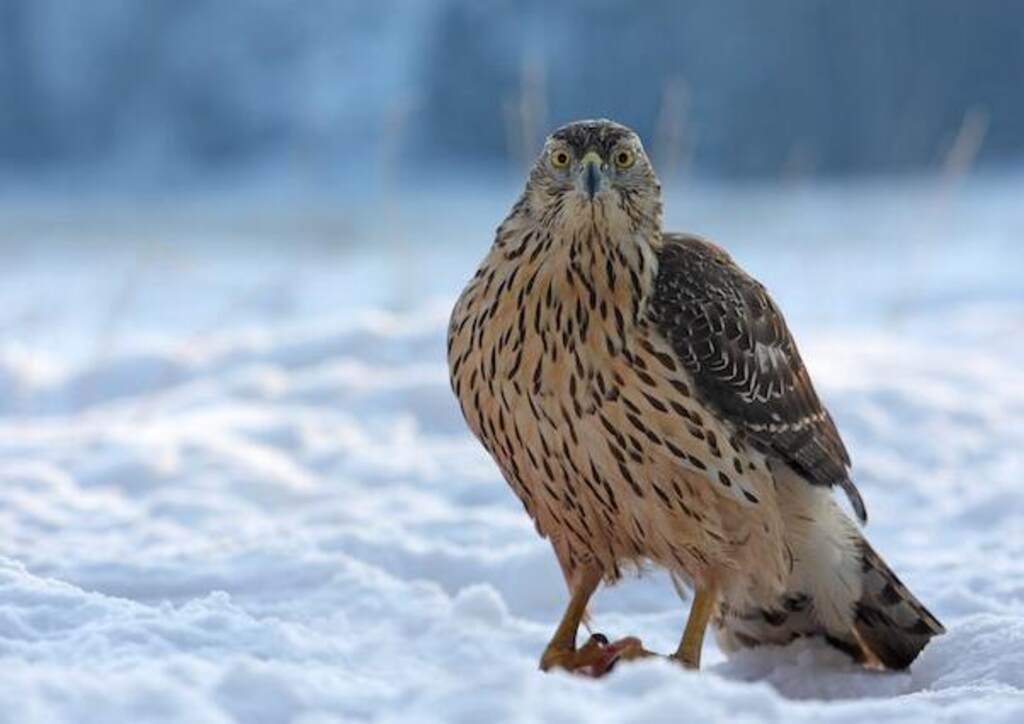
The Diet of Hawks
Hawks are birds of prey that feed on a variety of animals. They are opportunistic hunters, meaning they will take advantage of any available food source.
Although their diet varies by species, hawks primarily feed on small mammals, birds, reptiles, and insects.
Some species hunt fish as well. The primary food source for hawks is rodents such as mice and voles.
These small mammals are abundant in many habitats and provide a steady food supply for hawks throughout the year.
Other common prey items include squirrels, rabbits, and other small mammals found in woodland areas.
While some hawks hunt during the day, others hunt at night or during dawn and dusk hours, when their prey is most active.
Nocturnal hunting hawks have specialized adaptations to help them hunt in low light conditions, such as larger eyes with more rod cells to detect movement in low light levels.
Types of Hawks that Eat Rabbits
Among the types of hawks that eat rabbits are those classified as ‘accipiters.’ Accipiters are medium-sized hawks known for their agility and speed when pursuing prey through dense forests or thick brushy cover.
The three accipiter species commonly found in North America include the Cooper’s hawk (Accipiter cooperii), sharp-shinned hawk (Accipiter striatus), and northern goshawk (Accipiter gentilis).
Cooper’s hawks are known to eat a wide variety of prey including rabbits, squirrels, chipmunks, and other birds up to the size of crows or jays.
Sharp-shinned hawks also consume many types of small mammals like voles or chipmunks but have been observed targeting rabbits on occasion
Northern goshawk’s diets vary widely depending on location, but may include larger mammals like jackrabbits or snowshoe hares.
Red-tailed Hawks (Buteo jamaicensis) are also known to prey on rabbits and other small mammals; however, they are not classified as accipiters but rather a member of the Buteo genus.
Rabbits and their behavior
Overview of rabbit’s behavior
Rabbits are small mammals that are known for their quick movements and timid nature. They are herbivorous animals that feed on grasses, herbs, vegetables, and fruits. Rabbits are social animals that live in burrows with other rabbits.
These burrows provide protection from predators and the harsh weather conditions. Rabbits have a unique way of communicating with each other.
They use different vocalizations to convey different messages such as fear, anger, excitement, or pain. They also use body language such as ear movements and tail position to express their emotions.
How they protect themselves from predators
Rabbits face numerous threats from predators such as hawks, foxes, coyotes, and snakes. Therefore, they have evolved different strategies to protect themselves from these predators. One of the most common strategies is camouflage.
Rabbits have a brownish-gray fur coat that helps them blend into their surroundings when they sense danger. This makes it difficult for predators to locate them.
Another strategy is speed. Rabbits are incredibly fast runners, capable of reaching speeds of up to 45 miles per hour, which enables them to outrun most predators.
Additionally, rabbits rely on their keen senses such as sight and hearing to detect predators in advance and flee before they get attacked.
When threatened or cornered by a predator like a hawk or an owl in the open field during daylight hours where there is no cover available nearby (e.g., tall grasses), rabbits may perform zigzagging motions while running away so as not be caught by an airborne predator’s talons easily.
The impact of predation on rabbit populations
Although rabbits have evolved numerous strategies for protecting themselves from predators like hawks; they still face significant threats that can endanger entire populations, especially if predators find a way to gain access to their habitats.
For example, the destruction of natural habitats for rabbits results in the loss of cover and food, making them more vulnerable to predators.
In turn, the loss of rabbit populations negatively affects animals higher up on the food chain that depend on them for food.
Despite these risks, rabbits have managed to persist in many parts of the world by adapting their behavior and life history strategies.
They reproduce rapidly and can give birth to large litters multiple times a year. This allows them to replenish their populations quickly after predation events.
While hawks are known for being efficient predators on small mammals such as rabbits; these prey species have also evolved sophisticated tactics through millennia of natural selection that help them survive against these threats.
Their ability to adapt quickly and reproduce rapidly has enabled rabbits to persist in many environments around the world despite predation pressure from multiple predators including hawks.
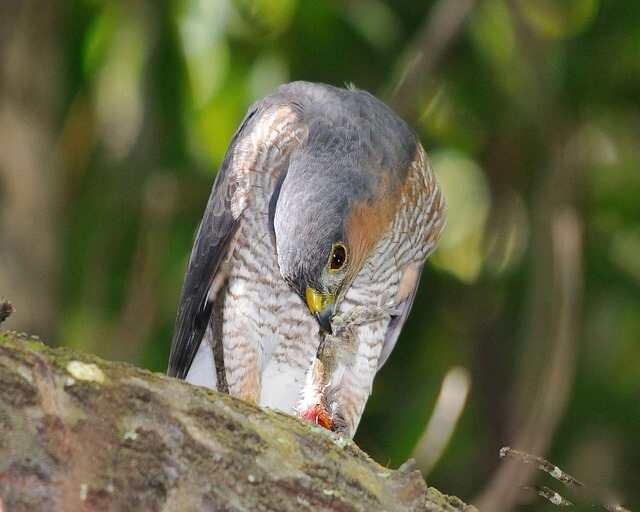
The Relationship Between Hawks and Rabbits
Hawks are predators that hunt a variety of prey, including rabbits. While hawks can be a threat to rabbits, their relationship is more complex than a simple predator-prey dynamic.
Hawks play an important role in regulating rabbit populations, and the two species have coexisted for thousands of years.
Understanding the relationship between hawks and rabbits is crucial for maintaining healthy ecosystems.
How Hawks Hunt for Rabbits
Hawks use several hunting techniques to catch rabbits. One common method is to perch on a high vantage point and wait for a rabbit to come into view.
When the hawk spots its prey, it swoops down at high speeds to grab it with its talons.
Another hunting technique involves chasing rabbits on foot, which requires more energy but can be effective when there is cover.
Hawks also use their keen senses to locate rabbits hiding in vegetation or burrows.
Their excellent vision allows them to spot movement from far away, while their hearing enables them to detect rustling sounds made by rabbits moving around.
When hunting rabbits, hawks tend to target young or weak individuals since they are easier to catch. However, healthy adult rabbits can also fall victim if caught off guard or in an open area without cover.
The Impact of Hawks on Rabbit Populations
The impact of hawks on rabbit populations depends on various factors such as habitat size, habitat complexity, and the number of predators and prey in the ecosystem.
In general, hawks play an essential role in regulating rabbit populations by controlling their numbers.
When hawk populations decline due to factors such as habitat destruction or human interference, rabbit populations can increase unchecked, leading them towards overpopulation which leads indirectly towards other problems such as disease and famine among other things.
However, when hawk populations increase too much, it leads directly towards decreased population of other bird species that are preyed upon by the same hawk species.
It is important to find balance in the relationship between hawks and rabbits.
Maintaining healthy ecosystems involves preserving habitats and allowing natural predator-prey interactions, even when they involve animals we may consider cute or charismatic.
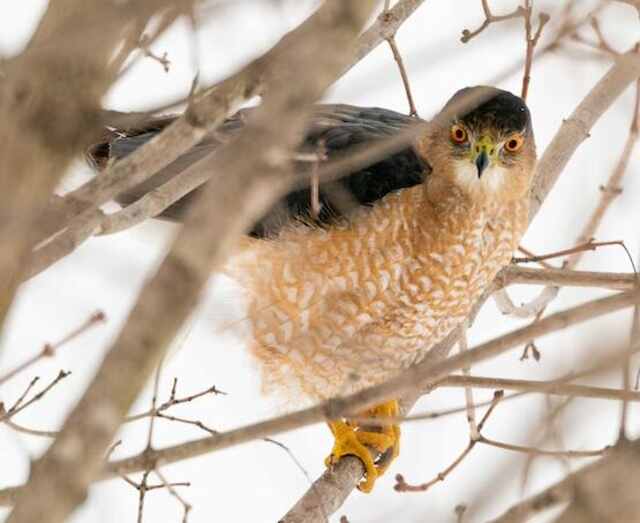
Habitat destruction:
Hawks and rabbits are both heavily affected by habitat destruction. Hawks rely on open habitats, such as fields and grasslands, to hunt for prey.
When these habitats are destroyed or fragmented due to human activity, the hawks’ hunting abilities can be severely impacted.
This can lead to a decline in hawk populations and an increase in their competition for food resources. Similarly, rabbits require specific habitats with ample cover and vegetation to hide from predators.
Habitat destruction can result in the loss of these resources, leaving them vulnerable to predation by hawks. This can lead to a decline in rabbit populations and an imbalance in the predator-prey relationship.
In addition, habitat fragmentation can create barriers that prevent hawks from accessing areas with high rabbit densities.
This results in a decrease in hawk predation on rabbits, which can allow for overpopulation of rabbits that may lead to overgrazing and further habitat degradation.
Climate change:
Climate change is another factor that affects the relationship between hawks and rabbits. Changes in precipitation patterns or temperature can alter plant growth cycles, which impacts both hawk prey species (rabbits) and vegetation used by rabbits for cover.
In general, warmer temperatures tend to favor small mammal species like rabbits because they have shorter generation times compared with larger herbivores like deer, which take longer time periods before they start breeding again after losing their young ones.
Warmer temperatures also may lead to increased activity of insects such as grasshoppers or crickets that make up a significant portion of some hawk species’ diets during certain times of year.
However, prolonged drought periods also could reduce insect abundance , thus reducing prey availability for hawks that feed primarily on them.
Human intervention:
Human intervention through activities like hunting or introduction of non-native predator species also affects the relationship between hawks and rabbits.
Over-hunting of rabbits can reduce their populations, which can cause hawks to switch to alternative prey species or even lead to declines in hawk populations.
In some cases, hunting and trapping may be used as a form of rabbit population control in areas where overgrazing is an issue.
However, this often results in increased predation by other species – such as coyotes or foxes – which can indirectly impact hawk populations.
Introduction of non-native predators like domestic cats or dogs can also have significant impacts on both hawks and rabbits.
Cats are notorious for preying on small mammals like rabbits and birds which is a common prey item for some hawks.
Thus, their introduction into ecosystems could result in increased predation on rabbits and competition with hawks for food resources.
Understanding the factors that affect the relationship between hawks and rabbits is important for preserving ecosystem balance.
Habitat destruction resulting from human activity, climate change, and human intervention all have significant impacts on these species.
Efforts at conservation should focus on managing these threats to ensure the long-term viability of both hawks and rabbits within their natural habitats.
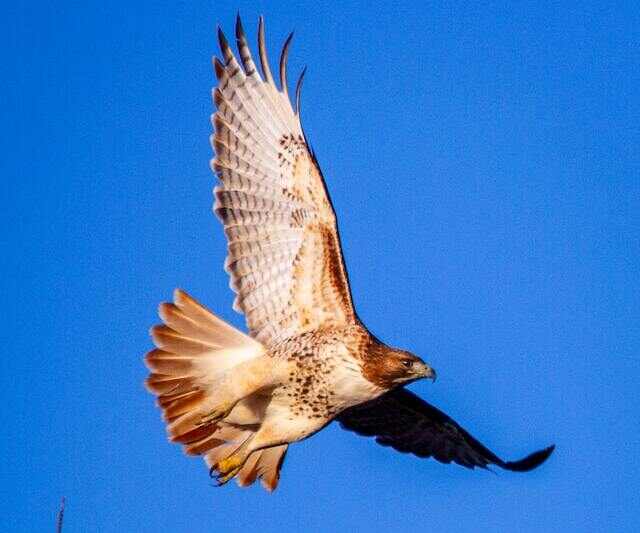
Conclusion
Throughout this article, we have explored the relationship between hawks and rabbits in great detail. We have learned that hawks are carnivorous birds of prey that feed on a variety of small animals, including rabbits.
Rabbits, on the other hand, are known for their agility and ability to outrun predators. However, they still fall prey to hawks due to their presence in open habitats.
It is important to recognize the delicate balance between predator and prey in ecosystems. Hawks play a crucial role in regulating rabbit populations by preying on weaker or sick individuals.
At the same time, rabbits serve as an important food source for hawks and other predators. Preserving this balance is crucial for maintaining healthy ecosystems.
The loss of either predators or prey can have a significant impact on the environment.
For example, if rabbit populations were to decline due to overhunting by humans or disease outbreaks, it could result in an increase of vegetation destruction caused by overgrazing.
At the same time, it is important to note that human intervention can also disrupt this balance.
Habitat destruction caused by urbanization or agriculture can displace both predators and prey from their natural habitats, throwing off the ecological equilibrium of these systems.
Understanding the relationship between hawks and rabbits is not only fascinating, but also essential for preserving healthy ecosystems.
By recognizing our impact on these systems and taking conscious steps towards ecosystem preservation efforts such as habitat restoration or conservation initiatives, we can ensure that future generations will be able to enjoy these beautiful creatures thriving in harmony with nature, just as we do today.
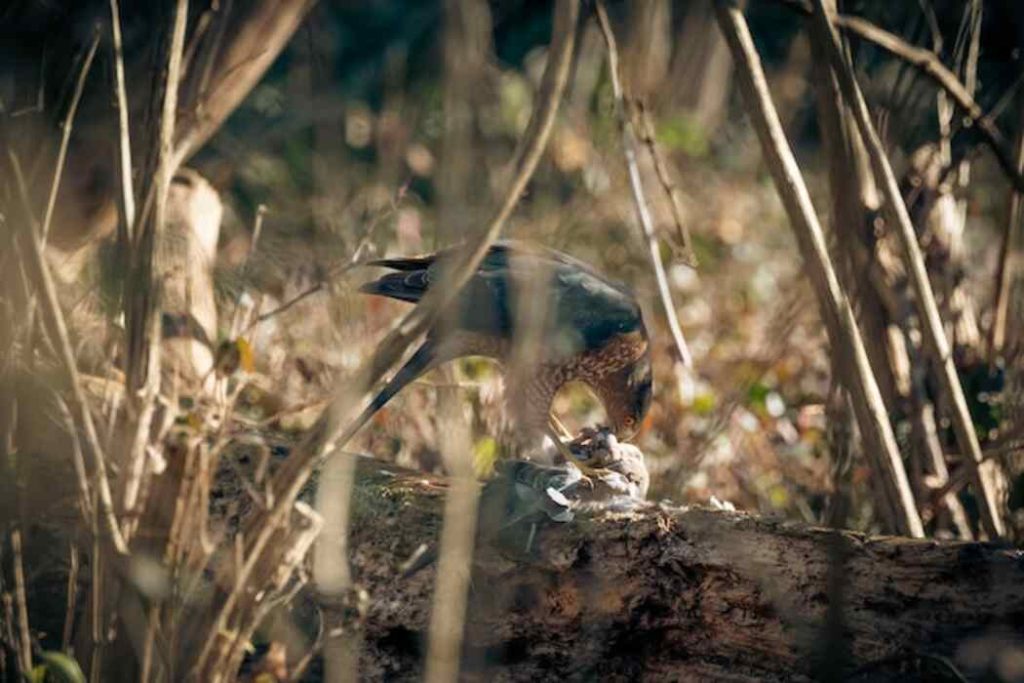
FAQs: Do Hawks Eat Rabbits?
What do rabbits eat?
Rabbits are herbivorous animals that primarily feed on plants such as grasses, clovers, and leafy weeds. Their diet consists of various vegetation, including herbs, vegetables, and fruits. They have adapted hind legs for quick jumping and big ears for detecting sounds from afar.
Why is the relationship between hawks and rabbits important?
The relationship between hawks and rabbits is crucial for maintaining ecological balance. Hawks control rabbit populations, preventing overgrazing on essential plants. Understanding this relationship helps us appreciate the complexity of nature and the interconnectedness of species.
What are the hunting techniques used by hawks to catch rabbits?
Hawks employ various hunting techniques. They perch on high vantage points and swoop down to grab rabbits with their talons. They also chase rabbits on foot, relying on their keen senses to locate prey hiding in vegetation or burrows. They tend to target young or weak rabbits.
Which hawks eat rabbits?
Accipiters such as Cooper’s hawk, sharp-shinned hawk, and northern goshawk are known to eat rabbits. Red-tailed hawks, although not accipiters, also prey on rabbits and other small mammals. The diet of hawks may vary depending on the species and location.
How do rabbits protect themselves from hawks?
Rabbits have developed various strategies to protect themselves from predators like hawks. They use camouflage with their brownish-gray fur to blend into their surroundings. They are also incredibly fast runners, capable of reaching speeds up to 45 miles per hour. Rabbits rely on their keen senses to detect predators and escape in advance.
What is the impact of hawks on rabbit populations?
Hawks play a significant role in regulating rabbit populations. By preying on rabbits, hawks control their numbers and prevent overpopulation. However, the impact depends on various factors such as habitat size, complexity, and the overall ecosystem’s balance.
What factors affect the relationship between hawks and rabbits?
Factors such as habitat destruction, climate change, and human intervention impact the relationship between hawks and rabbits. Habitat destruction can disrupt both predator and prey populations. Climate change affects vegetation and prey availability, while human intervention, like hunting or introducing non-native predators, can alter the balance.
How can we preserve the balance between hawks and rabbits?
Preserving the balance between hawks and rabbits involves managing threats such as habitat destruction, mitigating climate change impacts, and minimizing human intervention. Efforts towards conservation should focus on preserving habitats, promoting habitat restoration, and implementing conservation initiatives to ensure the long-term viability of both species.
References:
- National Audubon Society. (n.d.). Red-tailed Hawk. Retrieved from https://www.audubon.org/field-guide/bird/red-tailed-hawk
- All About Birds. (n.d.). Cooper’s Hawk. Retrieved from https://www.allaboutbirds.org/guide/Coopers_Hawk
- Hawk Mountain Sanctuary Association. (n.d.). Rough-legged Hawk. Retrieved from https://www.hawkmountain.org/raptor-info/raptor-biology/facts-and-figures-about-raptors/raptor-id-guide/rough-legged-hawk



